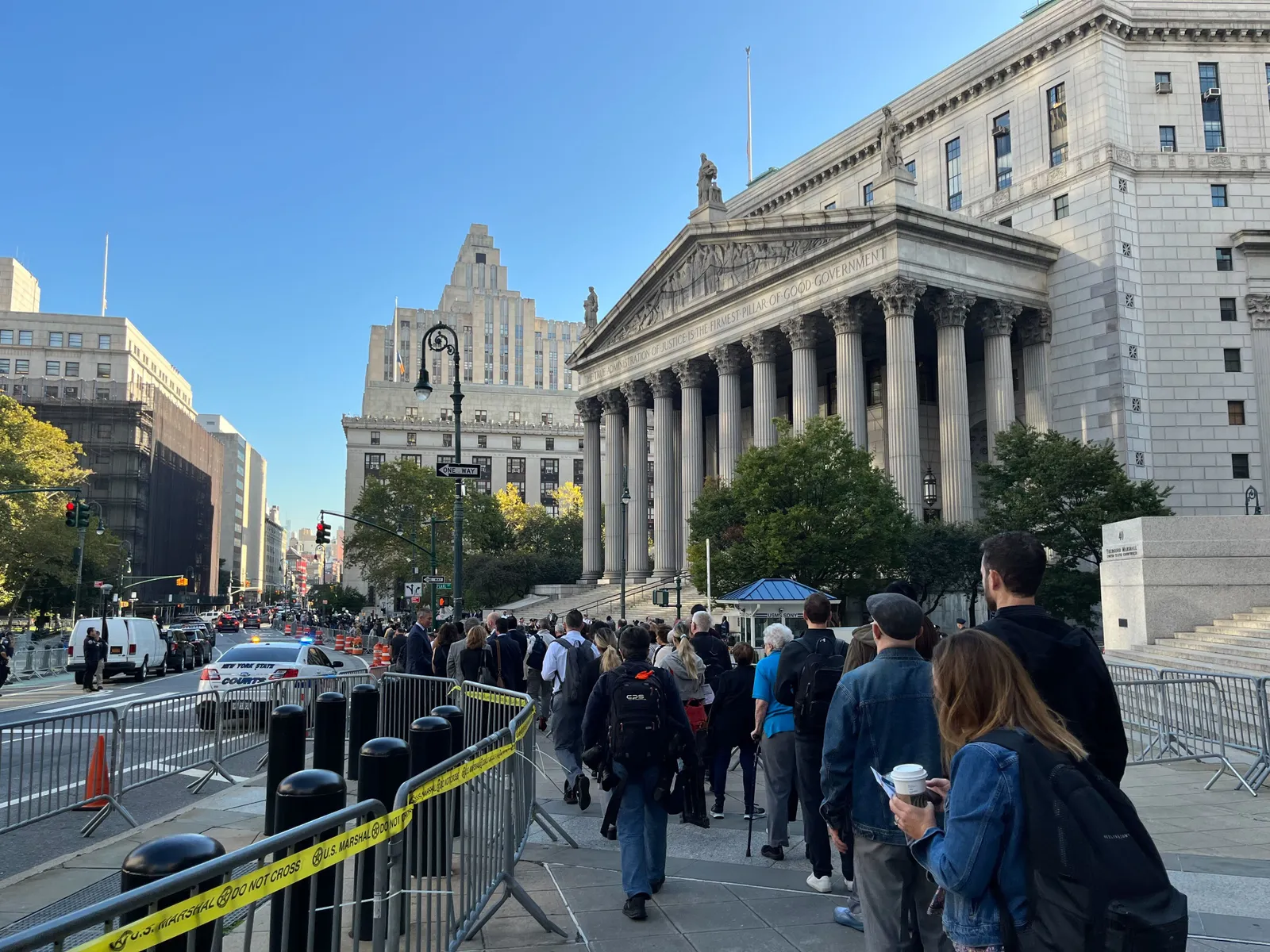Live: The Trial of FTX Founder Sam Bankman-Fried
When Sam Bankman-Fried’s FTX crypto exchange collapsed, customers lost billions of dollars. A New York court will decide whether it was fraud.
WELCOME TO OUR live coverage of the trial of FTX founder Sam-Bankman-Fried. Check out our explainer for everything you need to know about the trial. And follow along here each day as we report on the drama inside and outside the courtroom.
The Scene Outside the Courthouse
It’s a beautiful, clear morning in Foley Square outside the county and federal courthouses. NYPD has set up a broad array of steel barricades to manage traffic, keep pedestrians from walking near the courthouses, and create zones for the media.
There’s a special pen directly in front of the courthouses that employees can walk through to enter and where the day’s potential jurors are lined up. Police are walking the line reminding them that they need to have their summons out and available for inspection. Media are densely packed in an adjacent area and broadcast news have trucks parked around Foley Square.

The jury in Sam Bankman-Fried’s trial will likely be asked to focus on the matter of intent. Did the FTX founder deliberately deceive investors and customers?
Outside the courtroom, in the venture capital firms, sovereign wealth funds and other institutions that invested hundreds of millions of dollars into the exchange on its meteoric rise, there’s a need to answer an even bigger question: why do professional investors keep falling for frauds? The answer could be mundane. There’s too much money chasing too few good deals; and even highly qualified investors are prone to hubris and FOMO.
No phones or laptops are allowed inside the courtroom—though some updates will trickle out during breaks. SBF will be allowed to use an air-gapped laptop to take notes during his trial.
Today, the focus of the court is on jury selection with opening arguments expected tomorrow.
The trial could last up to six weeks, though it’s likely there will be a verdict just before Thanksgiving in the US—which is on November 23.
There’s a brief break in proceedings. SBF did indeed get a haircut. It’s slow going and jury selection might not wrap up today.
If jury selection is wrapped up today—and there’s still a chance of that—then opening arguments will begin first thing tomorrow.
While that process is ongoing, here’s a first glimpse inside the courtroom. In this sketch, you can see Bankman-Fried next to his attorney Christian Everdell.
And here’s Bankman-Fried, seated second from the right in the front row, surrounded by his attorneys with prospective jurors seated behind him. The court will need to decide on 12 jurors and six alternates before opening arguments can begin.
Before his arrest in December, Bankman-Fried ignored the most basic legal principle: say nothing, or risk incriminating yourself. Instead, the FTX founder embarked on a parade of media interviews, appeared on podcasts, tweeted, and started his own Substack. In the process, he handed prosecutors a pile of material to inform their case against him.
At trial, the defense will need to consider the risk that Bankman-Fried could make a similar mistake, by incriminating himself on the stand. The default advice for almost any criminal defendant is to plead the Fifth and decline to testify.
The defense strategy, legal experts say, is likely to be built around the idea that negligence, not a criminal intent to defraud, was the cause of the multi-billion-dollar hole. Testimony from Bankman-Fried isn’t necessarily required to make that argument—and may even undermine the approach. “I don’t know that I’d want to be on the stand having to make the case that I’m an idiot,” says Jason Allegrante, chief legal officer at crypto custody firm Fireblocks.
In complex fraud trials, the prosecution will often try to avoid overwhelming the jury with detail, and instead try to set up a narrative that’s easy to follow. That means they’re likely to place victims’ testimony at the center of their case. Many of those victims, though, will have little chance of ever recovering their money.
FTX actively marketed itself to clients in emerging markets in Asia, Latin America and Africa, where many customers saw crypto as a way to hedge against volatile local currencies or store their money safely.
As Anand, an FTX customer in India told WIRED, “What I did wasn’t supposed to be risky. If I had kept my money in a shady exchange, and it had gone bust, I would be at fault. But FTX was among the top two exchanges.”
Jury Selection to Continue Tomorrow
Despite Judge Lewis Kaplan’s earlier optimism that— with some luck and “the wind at our backs”—the day would end with a jury selected, the process will indeed continue tomorrow morning.
However, there are now enough qualified people from which to select the required 18 people (12 jurors and 6 alternates) first thing, and both sides expect to give opening arguments totaling about 90 minutes.
发表回复